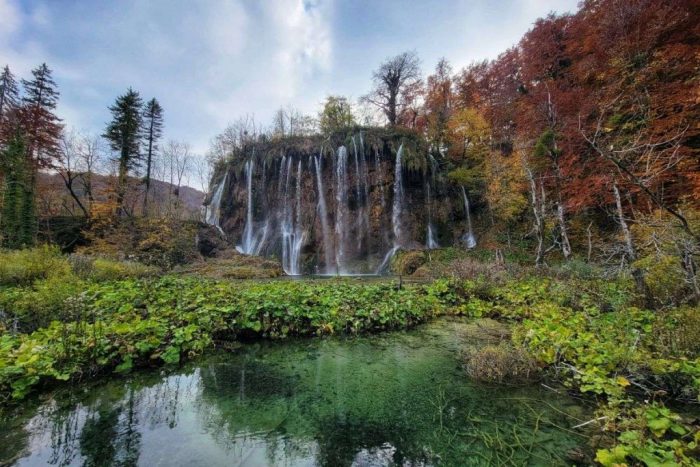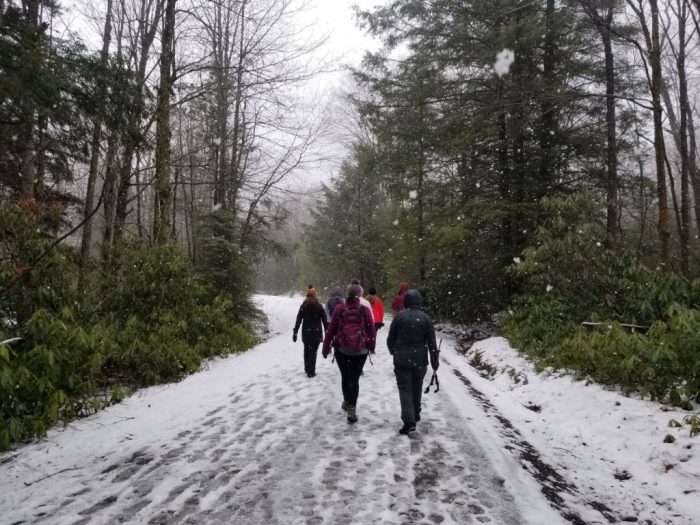How to Choose the Best Hiking Boots for Women
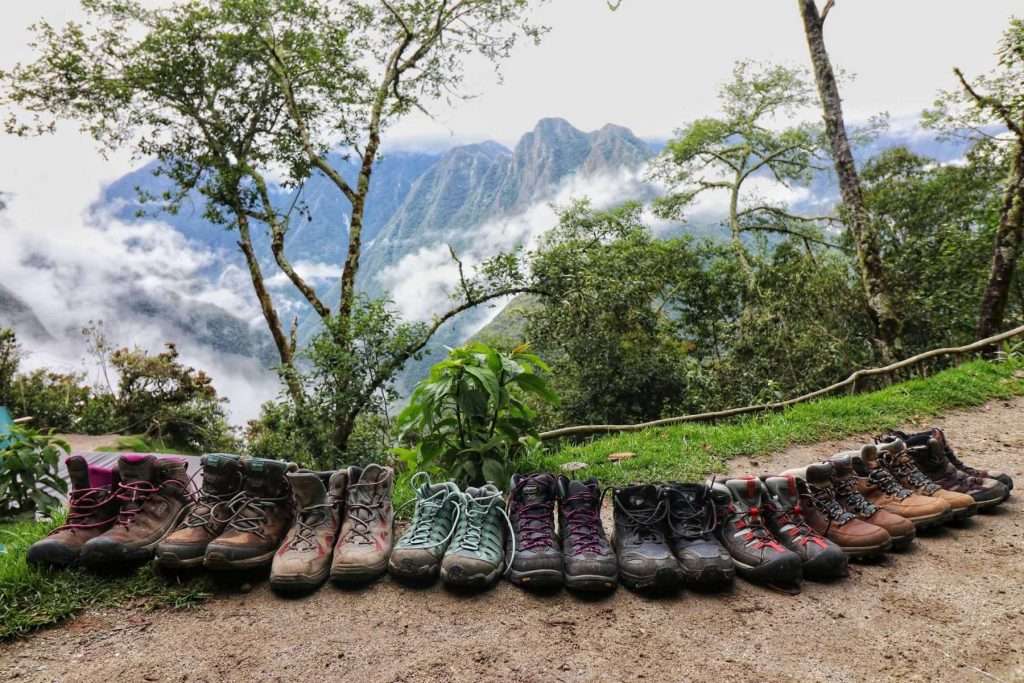
So you’ve cleared a spot in your calendar, checked the weather, and planned your route. You’ve thought of everything for your next hiking trip. But have you thought about your feet?
Every outdoorswoman needs a good pair of hiking boots, but once you begin researching, you might feel like you’re drowning in opinions and terminology. While it may take some time and research, finding the right pair of hiking boots to make your feet happy is absolutely worth it for your safety and enjoyment on the trail.
What to Look for in a Women’s Hiking Boot
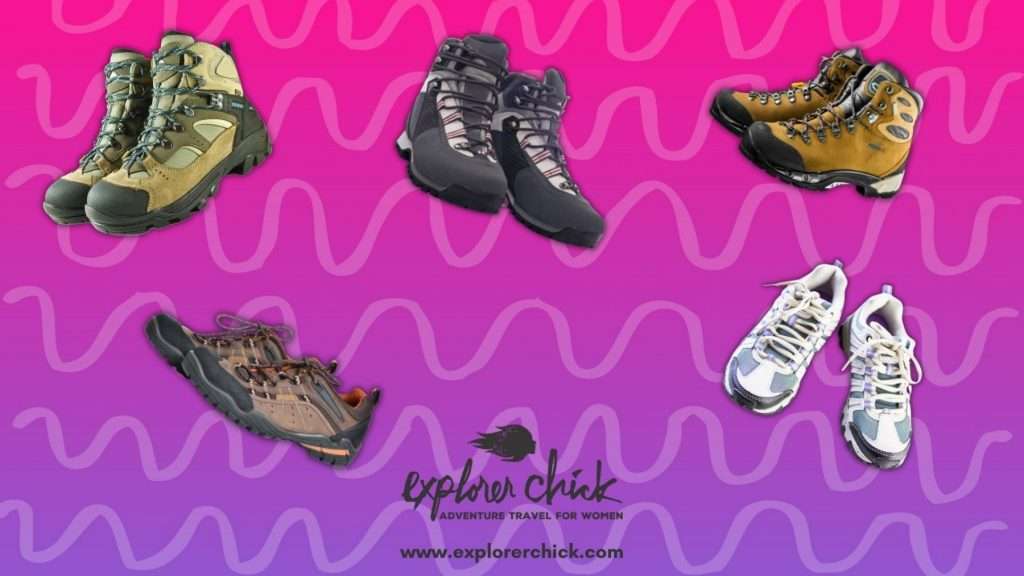
To find the best hiking boots for you, first consider the types of treks you enjoy. And we mean really get in on the details here. These are a few questions to get you started:
- What sort of terrain do you usually visit?
- How long do you hike for — several days or a few hours?
- Do you carry several days’ worth of supplies in your pack or do you just stash water and a few essentials in a day pack?
- Are you hiking in hot, dry areas or do you love the snow?
- Are you determined to set a new personal record or do you like to take your time in the great outdoors?
Your answers to these questions will help you assess how essential each of the following characteristics is for your perfect hiking footwear.
Fit and Comfort
What our experts say:
The most important quality is fit – no blisters, friction, or hot spots. Then look at other qualities like traction, ankle support, arch support, waterproofing, etc. — Explorer Chick guide Kirstie Mullikin
For a great fit, your feet should be secure in your boots everywhere except your toes. Your toes need to have room to move in the toe box (the portion of the boot that surrounds the toes).
However, they should not be able to slide forward and hit the end of the boot (and when you’re going downhill, that hurts). Also, make sure that your heel doesn’t slide up and down while you walk because that can cause blisters.
Traction
Traction refers to the grip of your boots’ soles on the ground. You’ll notice different boots have different ridges and bulges in the sole — this is the outsole. The depth and spacing of these tread or lug patterns and the specific material the outsole uses, make the difference between good traction and better traction.
If you often descend steep slopes, consider boots that have a heel brake. This is a separate section of the sole that allows your heel to dig into the trail and keep you from sliding.
If you’re a rock scrambling gal, you can also look into vibram rubber or approach shoes with special sticky rubber for extra grip.
Ankle Support
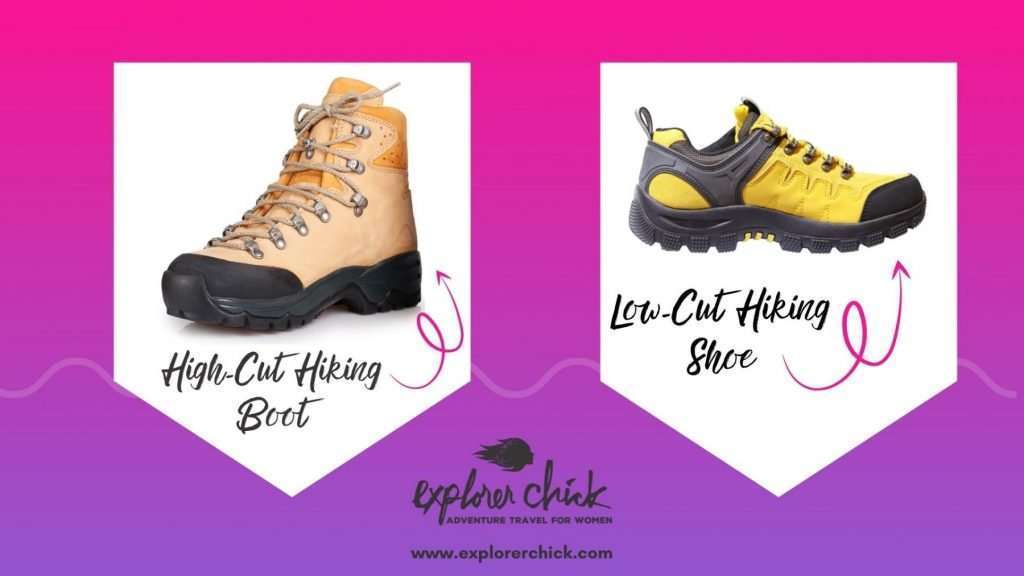
There are three cuts to choose from when selecting which boots are best for you: low-cut, mid-cut, and high-cut.
A low-cut hiking boot (sometimes people will call these a hiking shoe rather than boot) looks more like a running shoe. While it has less ankle support, this type of hiking shoe typically weighs less and allows your ankle to move. Low-cut hiking shoes are better for hiking established trails.
Mid-cut hiking boots have more ankle support, and high-cut boots have extra ankle support. If you like to hike in cold weather, frequently set out on long hiking trips, or carry heavy packs, you may need more ankle support, meaning a mid- or high-cut might be the best for you.
Also, if you hike on rocky terrain, a mid- or high-cut boot can protect your feet from annoying pebbles working their way inside your boots.
Arch Support
Different types of excursions (and different feet) require different types of arch support.
The midsole, a layer just above the outsole, helps to protect your feet, and a boot’s insole helps provide support. If you’re focused on speed, you might want your insole to be flexible. However, if you’re carrying a heavy backpack or hiking for many miles, you may want added stability from a stiff insole or midsole. When hiking in rugged terrain, your arches can get tired and sore from stepping on rocks and roots, and a stiffer midsole helps prevent this fatigue.
The right arch support can also depend on your specific foot shape. If you have flat feet or collapsing arches, you’ll want to pay special attention to the hiking shoe’s arch support. If you feel pain in your feet there are hiking boots that can help with plantar fasciitis that will give you the support you need.
Waterproofing
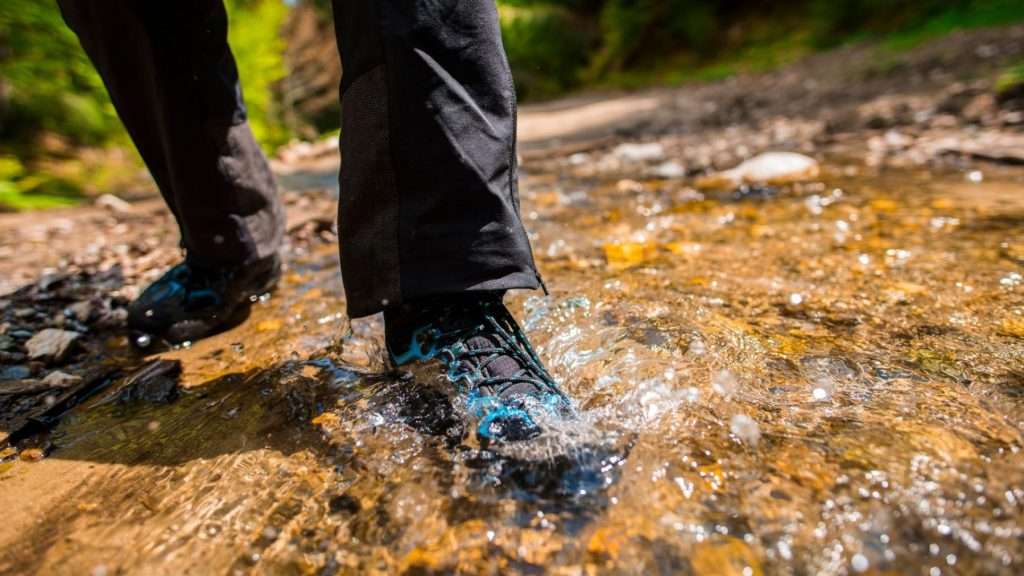
Hands up if you’ve experienced that *SQUIDGE* feeling of walking in wet shoes. 🙋♀️
If you hike in wet conditions, your boots should help keep your feet dry (and avoid the *squish* sensation). The materials of the upper (the part of the boot that wraps around your foot) help determine your boots’ water-resistance.
But it’s not as easy as just choosing the most water-resistant boot you can find and calling it a day. You need to balance water-resistance with the boots’ ability to breathe and the weight of the boots themselves.
The upper is typically made of leather or synthetic materials.
In the leather category, you’ve got full-grain, nubuck, and split-grain. Full-grain leather is your premium stuff — it’s classic and water resistant but heavy and not particularly breathable. Nubuck leather is a type of full-grain leather that’s also water resistant. This material looks similar to suede because it goes through a sanding and buffing process, but it’s more durable. Unlike suede, nubuck leather still uses the outer layer of the skin rather than inside so it keeps that durable, water resistant layer.
On the other hand, split-grain leather is usually a blend of leather and synthetic materials which often means these boots are breathable and lightweight but with less water-resistance.
Then there’s synthetic materials. This is usually nylon or polyester that’s light and breathable but typically not as water resistant.
If it’s essential that you have waterproof hiking boots, you may want to get a pair that has a waterproof membrane inside. These membranes can be made of Gore-Tex®, but they may not be as breathable as you’d like (say hello to extra sweaty feet).
Durability
Just as the choice of materials will affect the weight of the boots, breathability, and water resistance, this choice affects their long-term durability as well.
Full-grain leather and Nubuck leather are very durable while split-grain leather and synthetic materials will wear down quicker. This is part of the balancing act of finding the best hiking boots for you, so consider how often you hike and the type of terrain you usually hike on when considering how important durability is for your boots.
Price
Price is yet another factor you’ll have to consider when selecting the best boots or shoes for you. The price of women’s boots and shoes is similar to that of women’s brand name running shoes or gym shoes.
Most hiking shoes start under $100 and most hiking boots range anywhere from $130 to $230. However, you will find many variations on either end of this range. Depending on sales and brands, you can find boots for well under $100 and as high as $400 (and if you’re going hardcore mountaineering, that price can bump even more).
This wide price range means that you should be able to find a great pair of boots at a price you’re comfortable with. When you’re slogging through sticky mud with dry feet or you finish a long trek but feel like you just began, you’ll be glad you invested in hiking boots or shoes.
How to Find the Right Fit and Size for Women’s Hiking Boots and Shoes
Overwhelmed? *Deep breath* You got this.
The key to finding the best hiking boots for you is to shop at a store that employs experienced hikers and clearly explain what you need to them. Try on several pairs with the help of these experts and try to simulate the experience you’ll have on the trail.
What our experts say:
If possible go into a store and try on different brands/styles, check return policies in case they end up not working out after purchase – REI you can return shoes up to a year of purchase for ANY reason. — Explorer Chick guide Kirstie Mullikin
Wear the hiking socks you plan to wear while you actually hike and try to shop for boots or shoes at the end of the day when your feet are at their biggest. If you’ve struggled with shoe fit or support in the past, you may want to consider aftermarket insoles or experiment with a different lacing system, which can also affect fit.
The Difference Between Hiking Boots and Hiking Shoes: Does it Matter?

If you’re still a bit fuzzy on the difference between hiking boots and hiking shoes, here’s the scoop: while people will sometimes use the terms interchangeably, hiking shoes are typically low-cut, lightweight, breathable, flexible, and have slightly less intense outsole lugs. Hiking boots are more heavy duty and stiff, but usually offer more durability, traction, and support.
So should you go with hiking shoes or boots? Again, it depends on your goal.
If you stick to day hikes on well-kept trails free of rocks and roots, you might enjoy the breathability and lightness of hiking shoes. If you have to pick your way over boulders and uneven terrain in winter while carrying a full backpack, then you probably need to look at more supportive boots. Even so, some hikers may prefer to use hiking shoes even over long distances because the lightness makes it easier for them to complete their trek.
Okay, but do you really need hiking boots?
If you plan on hiking regularly, the answer is yes. Hiking boots are necessary for your comfort and, most importantly, your safety.
They’re another tool in your outdoor gear arsenal to help you prevent injuries that could immobilize you or slow your progress – especially dangerous in remote locations or when bad weather is imminent. You don’t want a painful blister to distract you from paying attention on the trail (or enjoying the gorgeous view) and even wet feet over long periods of time can be harmful.
Even if you don’t have any injuries or discomfort, the right pair of boots can go a long way to bring confidence on the trail. “I did the Via Ferrata in WV this past weekend… I kept hearing [my guide’s] voice saying ‘trust your boots, they are made for this.’” — One BADASS Explorer Chick on the West Virginia Via Ferrata ½ day trip.
What Are the Best Hiking Boots for Women Overall?
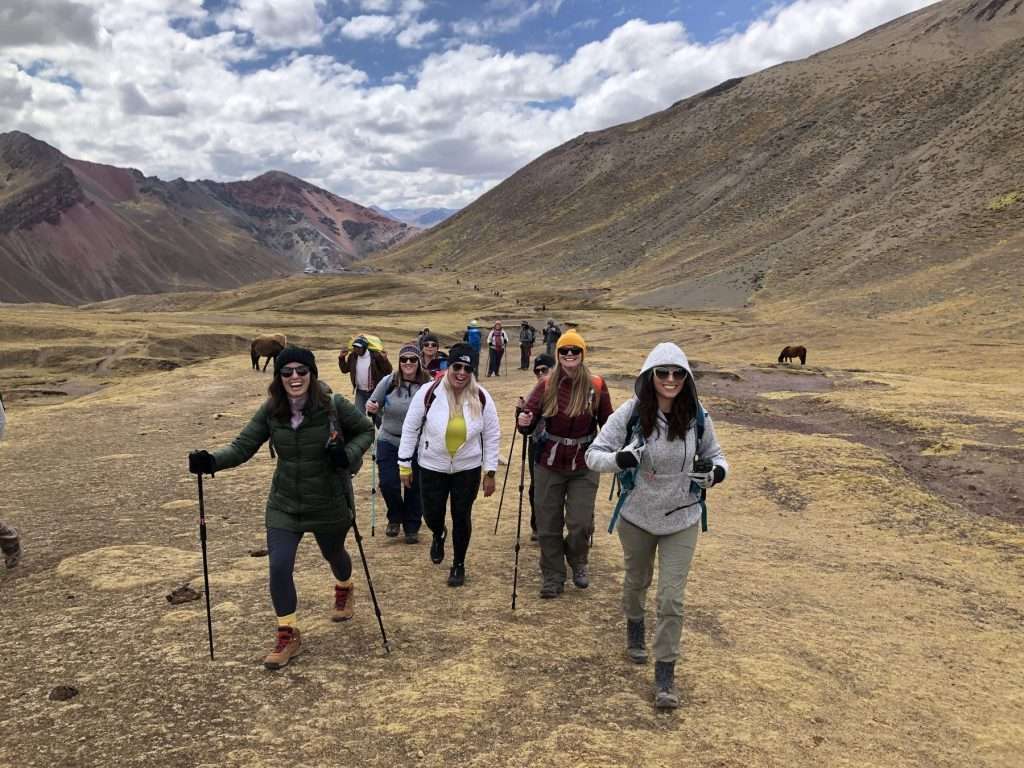
Trick question! There is no best boot (only the best boot for you)
Just because your best friend swears by a certain boot doesn’t mean that’s the best boot for you too. So take your time, and try on as many as you need to find your one true pair (the real OTP).
No matter how many pairs you’ve already tried, don’t be afraid to speak up if something doesn’t feel right and don’t settle for a pair that you aren’t completely happy with.
Finally, check the return policies of the store where you’re shopping. REI has a great return policy allowing you to return an item within a year of purchase with surprisingly few exceptions. If you choose a pair of boots and decide on the trail that they aren’t what you need, return them and choose another pair based on your experience. While it may be tempting to make your decision based on the stylish hiking boots that caught your eye, let your feet tell you which are the most comfortable boots, and hit the trail!

Meet the Writer

Maggie Gigandet
Maggie Gigandet is a Nashville freelance writer focusing on wildlife and the outdoors. An avid hiker, Maggie runs a blog about the Tennessee State Parks. When she’s not on the trail, Maggie loves to binge on British television shows and daydream about her next trip. Her life’s ambition, having pursued a course of independent study in doughnut tasting for years, is to one day judge a doughnut bake-off.
Read More Training Tips
- Training to Hike the Grand Canyon: Gear, Tips, and Exercises
- Knee Pain Hiking Downhill: Causes, Prevention, and Exercises
- Angels Landing: The Scariest Hike You’ll Never Forget
- How to Train for Hiking: 5 Moves to Get You into Hiking Shape
- Training for Half Dome and Half Dome Cables
- How to Choose the Best Hiking Boots for Women
- How to Start Backpacking: 6 Things You MUST Know
- How to Train for Hiking and Backpacking Trips

